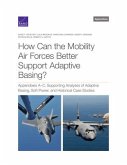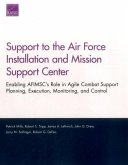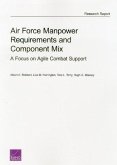The U.S. Air Force is exploring adaptive basing (AB) concepts to reduce the vulnerability of U.S. forces to growing air and missile threats and to preserve critical combat capabilities in highly contested environments. These concepts are likely to stress the U.S. Air Force's global mobility capabilities. AB concepts call for force packages to operate in mobile and responsive ways to provide protection and fight from positions of advantage. Although these concepts place additional and different demands on the U.S. Air Force's global mobility capabilities, their effect on the Mobility Air Forces (MAF) had not been fully analyzed. In this report, the authors assess the impact of AB concepts on the MAF and recommend how to enable the MAF to better support operations in contested environments. The analysis considers the impact of several AB concepts on the demand for tankers, airlift, and base enablers in the Pacific area of responsibility and examines the sufficiency of current MAF forces to support AB concepts. Potential enhancements are then considered. In general, the authors find that the current MAF (tankers, airlift, and base enablers) could support a few fighter wings (two or three) operating using an AB scheme of maneuver. Significant changes must be made to support larger force packages. Potential enhancements include culture; tactics, techniques, and procedures; equipment; and new technologies.
Hinweis: Dieser Artikel kann nur an eine deutsche Lieferadresse ausgeliefert werden.
Hinweis: Dieser Artikel kann nur an eine deutsche Lieferadresse ausgeliefert werden.








